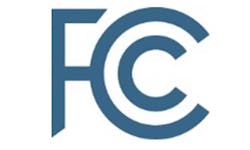The three commissioners of the Federal Communications Commission (FCC) voted 2-1 to approve a Notice of Proposed Rulemaking (NPRM) that marks the first step in FCC Chairman Ajit Pai's plan to rescind the Open Internet Order. The order, one of the hallmark rulemakings during the tenure of former Chairman Thomas Wheeler, reclassified internet service as a telecommunications service under Title II of the Communications Act and Section 706 of the Telecommunications Act of 1996, which treats services provided by utilities (see "FCC targets Title II regulation of Internet services with forbearances for Net Neutrality"). The order then attempted to enforce "net neutrality" by forbidding service providers from giving preferential treatment to some services delivered over the public internet (perhaps their own or those of providers who paid an additional fee) over others.
Pai, a Republican commissioner under Wheeler, has been a longstanding critic of Open Internet Order, so it was no surprise that he would move to rescind it now that he sits in Wheeler's former chair. The vote to approve the NPRM, an effort dubbed "Restoring Internet Freedom," was 2-1 along party lines. Republican Commissioner Michael O'Rielly joined Pai to approve the measure against the "no" vote of sole Democrat Mignon Clyburn. (The FCC typically has five commissioners, but two positions are vacant.)
The NPRM proposes three actions:
- Reverse the classification of broadband service under Title II
- Return classification of mobile broadband internet access service to that of a private mobile service
- Eliminate what an FCC press release described as "the catch-all Internet conduct standard" created as part of the Open Internet Order, which critics of the Open Internet Order say created regulatory uncertainty among service providers.
The FCC also will seek comment on whether it should keep, modify, or eliminate the bright-line rules established as part of the Open Internet Order. These included no blocking, no throttling, and no paid prioritization of services by ISPs.
While pledging their allegiance to a level playing field among services delivered via the public internet, service providers and other critics asserted the Open Internet Order stifled innovation and created enough uncertainty to limit investment in broadband networks and services. Chairman Pai said that the regulatory structure should return to what was in place before Wheeler took over the FCC.
"Today, we propose to repeal utility-style regulation of the Internet. We propose to return to the Clinton-era light-touch framework that has proven to be successful. And we propose to put technologists and engineers, rather than lawyers and accountants, at the center of the online world," said Chairman Pai via a prepared statement. "The evidence so far strongly suggests that this is the right way to go."
Clyburn, whose vote helped put the Open Internet Order into practice, took a different view. "Today's Notice of Proposed Rulemaking, more appropriately known as the Destroying Internet Freedom NPRM, deeply damages the ability of the FCC to be a champion of consumers and competition in the 21st century," she said via a press statement. "It contains a hollow theory of trickle-down internet economics, suggesting that if we just remove enough regulations from your broadband provider, they will automatically improve your service, pass along discounts from those speculative savings, deploy more infrastructure with haste, and treat edge providers fairly. It contains ideological interpretive whiplash, boldly proposing to gut the very same consumer and competition protections that have been twice-upheld by the courts. And it contains an approach to broadband that will throw universal service money to broaden its reach, but abandon users, when something goes wrong, particularly if they are faced with anti-competitive or anti-consumer practices."
Clyburn ended by calling on advocates of the Open Internet Order to take the FCC to court.
The NPRM now enters a 90-day comment period. Pai vowed to make any proposed order available for public viewing "well before" any vote is taken. He also promised a cost-benefit analysis of any proposed actions.
For related articles, visit the Business Topic Center.
For more information on FTTx technology and suppliers, visit the Lightwave Buyer's Guide.

Stephen Hardy | Editorial Director and Associate Publisher
Stephen Hardy has covered fiber optics for more than 15 years, and communications and technology for more than 30 years. He is responsible for establishing and executing Lightwave's editorial strategy across its digital magazine, website, newsletters, research and other information products. He has won multiple awards for his writing.
Contact Stephen to discuss:
- Contributing editorial material to the Web site or digital magazine
- The direction of a digital magazine issue, staff-written article, or event
- Lightwave editorial attendance at industry events
- Arranging a visit to Lightwave's offices
- Coverage of announcements
- General questions of an editorial nature
